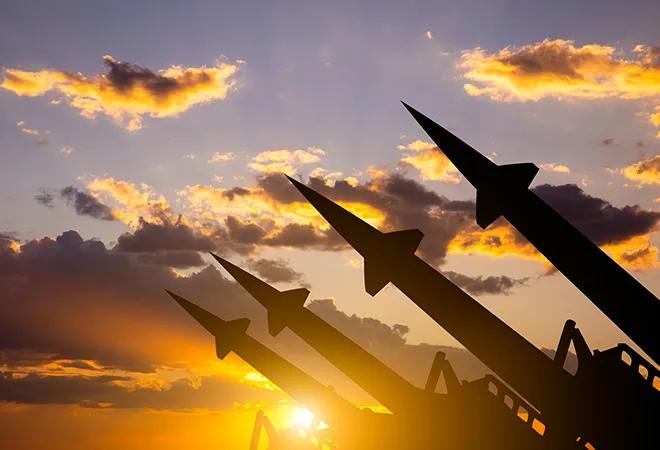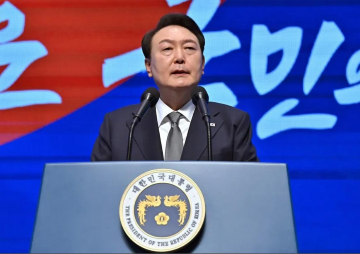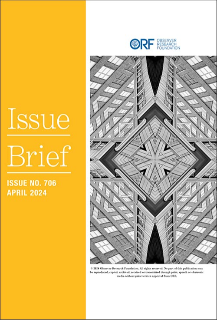
There is a feeling amongst academics, professionals, and some policymakers that the global nuclear order is in a period of flux and perhaps transformation. This shift is being driven by the development and deployment of a range of different military technologies with possible strategic effects and by a concurrent shift in the context and environment within which nuclear weapons issues are thought about and nuclear peace is maintained.
However, with a few notable exceptions, this discussion has focused primarily on the US–Russia and US–China relationship. The strategic balance between these three major nuclear powers is undoubtedly important, but far less attention has been given to the impact—both directly and indirectly—of these developments in South Asia. While the potentially transformative impact of disruptive, often non-nuclear weapons technologies and associated systems may be at an early stage in South Asia, we can already see how such developments could lead to new types of nuclear risks, the undermining of stability, and perhaps an increased chance of nuclear use.
This combination creates new problems across the global nuclear order, but perhaps is nowhere more acute than in Southern Asia.
The global challenge appears on the surface to be principally technological: The development and deployment of increasingly sophisticated missile defences; the emergence of non-nuclear long-range precision strike capabilities (including hypersonic weapons), as well as renewed interest in exotic means of nuclear delivery; new and more conspicuous methods of counter-space, anti-submarine, and cyber warfare, all of which are unfolding in a real-time and porous nuclear information space. These challenges are playing out at the same time as a return to great power competition between the US, Russia, India, and China in a more competitive geopolitical landscape. This combination creates new problems across the global nuclear order, but perhaps is nowhere more acute than in Southern Asia. Indeed, these developments could alter regional nuclear deterrence dynamics, trigger an already simmering arms race between India and Pakistan, and increase the risk of unintended escalation.
Both India and Pakistan have demonstrated a growing appetite for new types of strategic weaponry, and while not always in public, they are clearly beginning to factor in the possible impact of new types of capabilities by each other for deterrence and security. One author has already
warned of a possible move towards an “Indian counterforce” doctrine, possibly involving strategic non-nuclear as well as, or even instead of, nuclear weapons, and the possible impact of a multi-layered Indian BMD—and its link with new Pakistani nuclear delivery systems—has been part of this debate for over a decade. The worry, of course, is that the introduction of more sophisticated and destructive technologies in South Asia is going to lock India and Pakistan in a security dilemma and create a vicious cycle that will become increasingly difficult to break.
South Asia is currently lagging behind the US, China, and Russia in the development of SNNW capabilities and doctrine, and the role that these technologies will play in the region will largely depend on the geostrategic and political interests and the evolution of the strategic dynamics.
The existing academic literature on technological change in military capabilities, and especially the advent of strategic non-nuclear weapons (SNNW) and South Asia tends to focus on the capabilities of these technologies and to emphasise the risks inherent in their use, but limited attention is paid to the political discourse and perceptions on how India and Pakistan intend to use these technologies in the future, and how this is going to affect their doctrines. For sure, South Asia is currently lagging behind the US, China, and Russia in the development of SNNW capabilities and doctrine, and the role that these technologies will play in the region will largely depend on the geostrategic and political interests and the evolution of the strategic dynamics. That said, the impact of these technologies in South Asia could be more acute given the past history of confrontation, unsettled strategic balance, incendiary political flashpoints, and the short decision-making times resulting from geography and a contiguous border. To understand the impact that SNNW, in particular, will have on South Asia, we need to look at the broader picture. The increasing interdependence between the international and regional levels has contributed to creating a domino effect, linking the United States, China, India, and Pakistan. These dynamics will not only shape security relations between the great powers, but will also have dangerous spillover effects in South Asia and in other regions too. In the last few years, the US’ nuclear and military modernisation and growing reliance on non-nuclear technologies with strategic impact have pushed China to develop more sophisticated technologies of their own. Growing concerns about China’s intentions and capabilities —especially the fear of a rapid increase in nuclear warheads and delivery vehicles—have triggered a cascade effect whereby India will respond by expanding its nuclear programme and seeking to develop SNNW, while Pakistan will follow to catch up with India.
The intensification of the competition between the United States and China, together with the efforts of Washington and Beijing to establish stronger ties with India and Pakistan respectively, are also transforming South Asia’s strategic landscape. In the last few years, the US–India civil nuclear deal culminated in the establishment of a strategic partnership, exacerbated a marked deterioration of US–Pakistani relations, and has led to the strengthening of China-Pakistan cooperation through the China-Pakistan Economic Corridor and the Belt and Road Initiative. At first glance, it this may appear to have created two distinct blocs (US-India vs China-Pakistan), but the reality is more nuanced and complex.
Nuclear developments in and by India and Pakistan have never quite fitted with the predominantly western notion of splitting nuclear history into distinct “ages” either side of the end of the Cold War.
At the moment, relations between the US and Pakistan are at a low point, but the Biden administration wants to continue to cooperate with Pakistan because of its support for US counterterrorism initiatives, to monitor its nuclear capabilities, and to keep the lines of communication open to the Pakistani military. Pakistan, in turn, wants to keep a stable relationship with both the US and China. This is because Pakistan has a long history of cooperation with the US that dates back to the Cold War, and it has been one of the main recipients of US foreign aid, while China remains a crucial economic and military partner. Finally, India shares US concerns about China and how to manage its rise in the Indo-Pacific region, but the Indian government does not want to be embroiled in a formal alliance with the US because it wants to preserve its strategic autonomy and does not want to be caught in a conflict that could hamper its economic growth.
Whether it is right to conceive of South Asia as entering into a “Third Nuclear Age”; whether it is in the same way as other nuclear-armed actors is a matter of debate: Each region and each state may experience this shift in global nuclear order
differently. Nuclear developments in and by India and Pakistan have never quite fitted with the predominantly western notion of splitting nuclear history into distinct “ages” either side of the end of the Cold War. But irrespective of the terminology, Third Nuclear Age dynamics: Disruptive, often non-nuclear-technologies with strategic effect, geopolitical competition, and a complex and fluid nuclear information environment, will impact the future of the region, and particularly the nature and shape of nuclear risks. There is still time to, in effect, get ahead of these developments and perhaps even mitigate some of the worst possible implications before they fully materialise in the region, but this will require a genuine interest in dialogue, risk reduction, and restraint that has been conspicuously absent in recent times.
The authors have received a European Research Council grant. This article is a part of the research project.
The views expressed above belong to the author(s). ORF research and analyses now available on Telegram! Click here to access our curated content — blogs, longforms and interviews.



 There is a feeling amongst academics, professionals, and some policymakers that the global nuclear order is in a period of flux and perhaps transformation. This shift is being driven by the development and deployment of a range of different military technologies with possible strategic effects and by a concurrent shift in the context and environment within which nuclear weapons issues are thought about and nuclear peace is maintained.
However, with a few notable exceptions, this discussion has focused primarily on the US–Russia and US–China relationship. The strategic balance between these three major nuclear powers is undoubtedly important, but far less attention has been given to the impact—both directly and indirectly—of these developments in South Asia. While the potentially transformative impact of disruptive, often non-nuclear weapons technologies and associated systems may be at an early stage in South Asia, we can already see how such developments could lead to new types of nuclear risks, the undermining of stability, and perhaps an increased chance of nuclear use.
There is a feeling amongst academics, professionals, and some policymakers that the global nuclear order is in a period of flux and perhaps transformation. This shift is being driven by the development and deployment of a range of different military technologies with possible strategic effects and by a concurrent shift in the context and environment within which nuclear weapons issues are thought about and nuclear peace is maintained.
However, with a few notable exceptions, this discussion has focused primarily on the US–Russia and US–China relationship. The strategic balance between these three major nuclear powers is undoubtedly important, but far less attention has been given to the impact—both directly and indirectly—of these developments in South Asia. While the potentially transformative impact of disruptive, often non-nuclear weapons technologies and associated systems may be at an early stage in South Asia, we can already see how such developments could lead to new types of nuclear risks, the undermining of stability, and perhaps an increased chance of nuclear use.
 PREV
PREV

